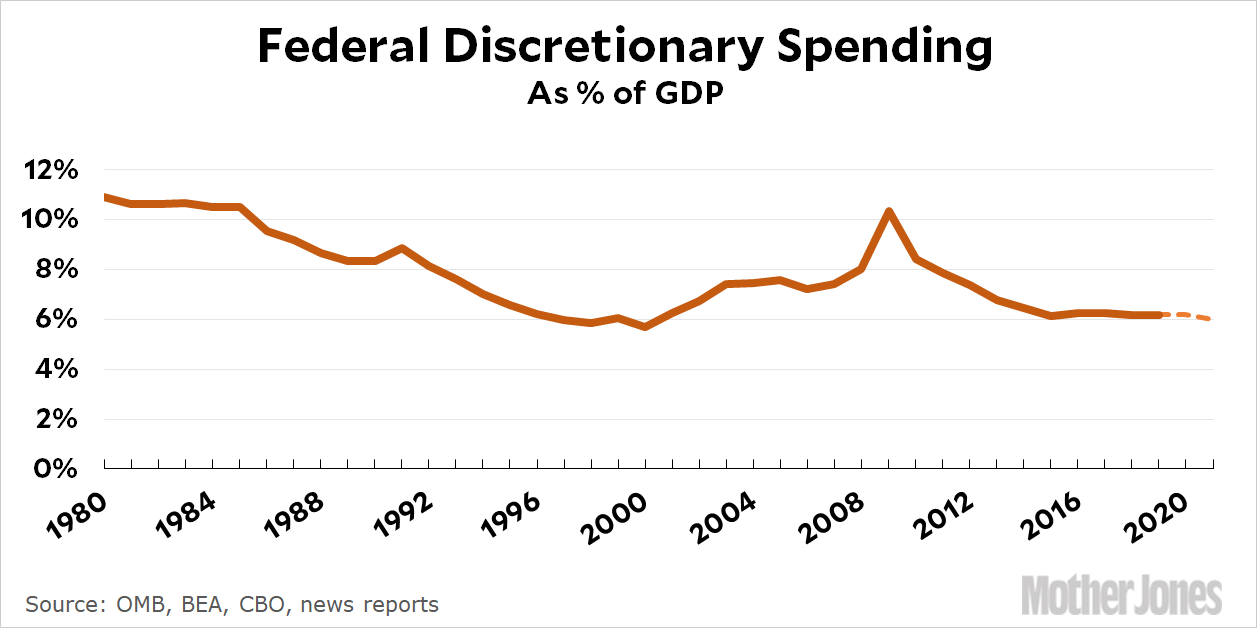Congressional Democrats have reached a spending deal with President Trump. According to news reports, it increases discretionary spending by $320 billion compared to the caps set in the 2011 Budget Control Act. Budget hawks are outraged:
“It appears that Congress and the president have just given up on their jobs,” said Maya MacGuineas, president of the Committee for a Responsible Federal Budget, which blasted out a statement arguing the tentative deal “may end up being the worst budget agreement in our nation’s history.”
Yes. They’ve just given up. Here is a chart showing discretionary spending over the past 40 years:

Discretionary spending has been declining steadily for four decades, interrupted only by the Iraq War and the Great Recession. The new budget deal will keep it at about 6 percent of GDP, the same as it was in 2000 and far less than it was in 1980. This is hardly a picture of a budget that’s skyrocketing out of control.
If the hawks want to gripe about mandatory spending—primarily Medicare, Medicaid, Social Security, and other social welfare programs—that’s fine. Gripe away. But today’s budget deal has nothing to do with that. It’s solely about discretionary spending levels, and there’s simply no reason to think either that discretionary spending is a big problem or that today’s deal will make it into one.

















